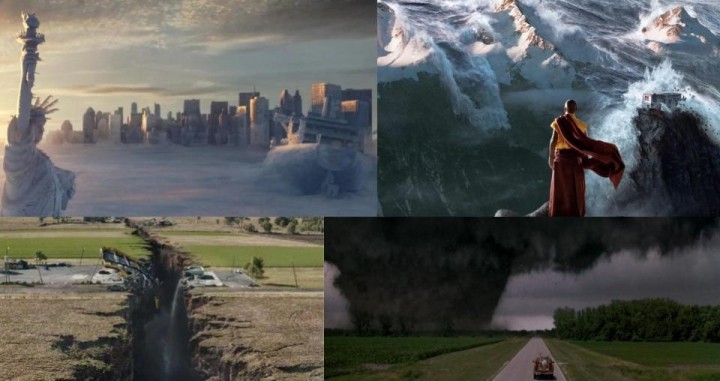In honor of the theatrical release of Twisters and its success at the box office, let’s dive into why disaster movies are so numerous and so popular. From the whole world ending in 2012 (2009), The Day After Tomorrow (2004), and Independence Day (1996), to the smaller-scale yet still tragic disasters in the original Twister (1996), Titanic (1997), and San Andreas (2015), people are obsessed with watching humanity suffer. There are even movies making fun of this obsession and these disaster films, like Don’t Look Up (2021) and Airplane! (1980). So, why is this? Why are disaster films so successful?
Disaster movies have carved out a prominent niche in the film industry, captivating audiences worldwide. A combination of thrilling narratives, the exploration of human resilience, and the sheer spectacle of catastrophic events likely contributes to their popularity.
One of the primary draws of disaster films lies in their ability to immerse viewers in extreme scenarios. These films often showcase natural catastrophes, like earthquakes and tsunamis, or manufactured disasters, such as nuclear explosions or viral outbreaks. The high-stakes situations create an adrenaline rush that captivates viewers, allowing them to experience intense emotions from the safety of their seats. This escapism provides a thrilling ride, making disaster films a go-to for those seeking excitement and suspense.
Moreover, disaster movies frequently delve into the themes of survival and human resilience. As characters face overwhelming odds, viewers root for them to overcome obstacles and triumph amid chaos. This focus on the human spirit often evokes empathy, offering a glimpse into how people react under pressure. Audiences appreciate these narratives as they reflect both the vulnerability and strength inherent in humanity, resonating on a personal level with many.
Furthermore, disaster films often serve as a reflection of societal fears, tapping into contemporary anxieties about the world. Whether it be concerns over climate change, pandemics, or global conflicts, these movies resonate with viewers by mirroring the threats they see in real life. In this sense, disaster films offer a form of catharsis, allowing audiences to confront and process their fears through fictional storytelling.
The visual spectacle is another significant factor contributing to the popularity of disaster movies. With advancements in special effects, filmmakers can now depict large-scale destruction and chaos on screen with stunning realism. This level of detail makes disaster movies visually engaging, drawing in audiences with spectacular scenes that are both captivating and terrifying.
The popularity of disaster movies stems from their exhilarating narratives, exploration of human resilience, reflections of societal fears, and remarkable visual spectacles. Whether providing thrilling escapism or provoking deeper thought about real-world issues, these films continue to hold a special place in the hearts of audiences around the globe.
Do you have a favorite disaster film?


